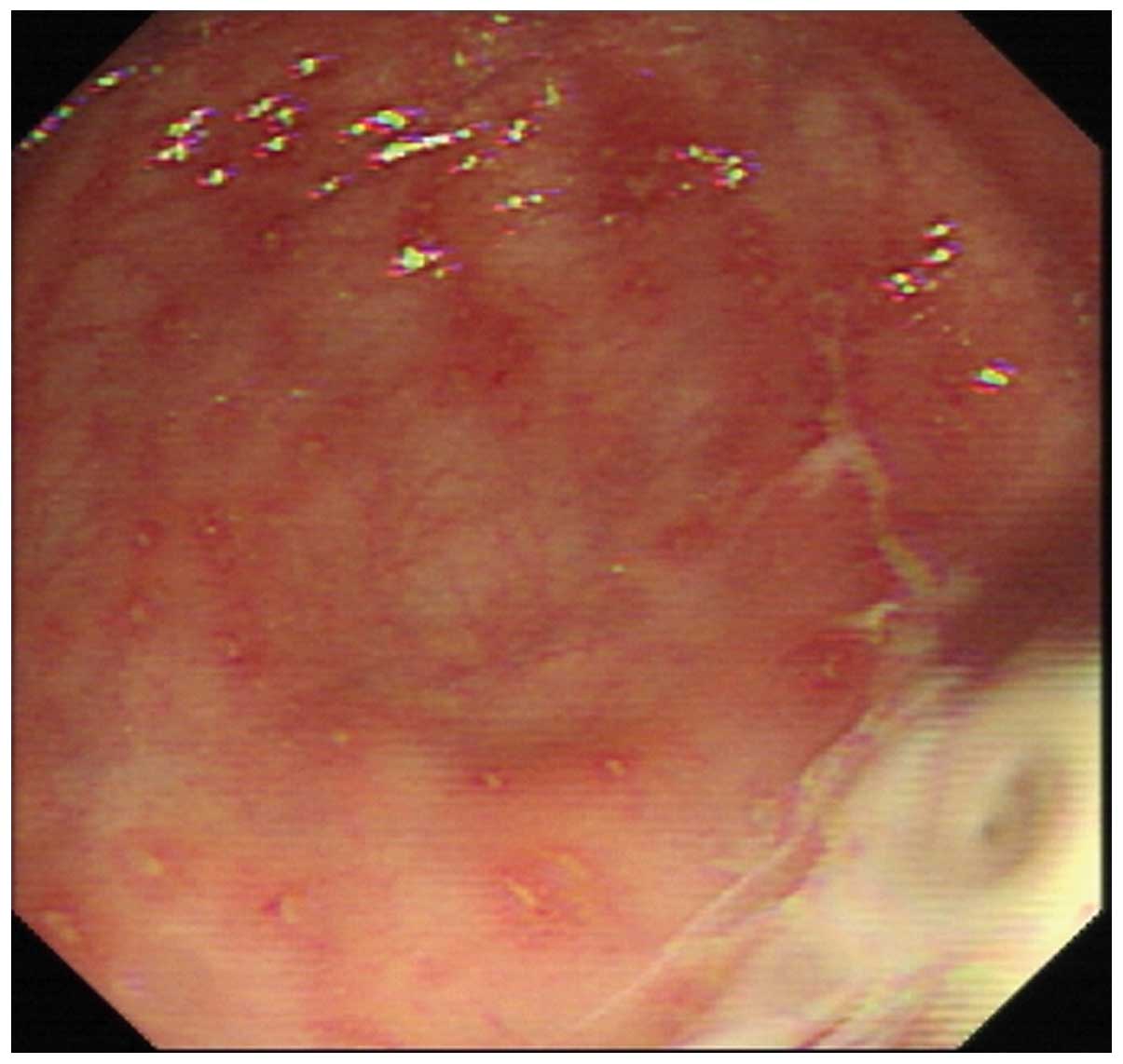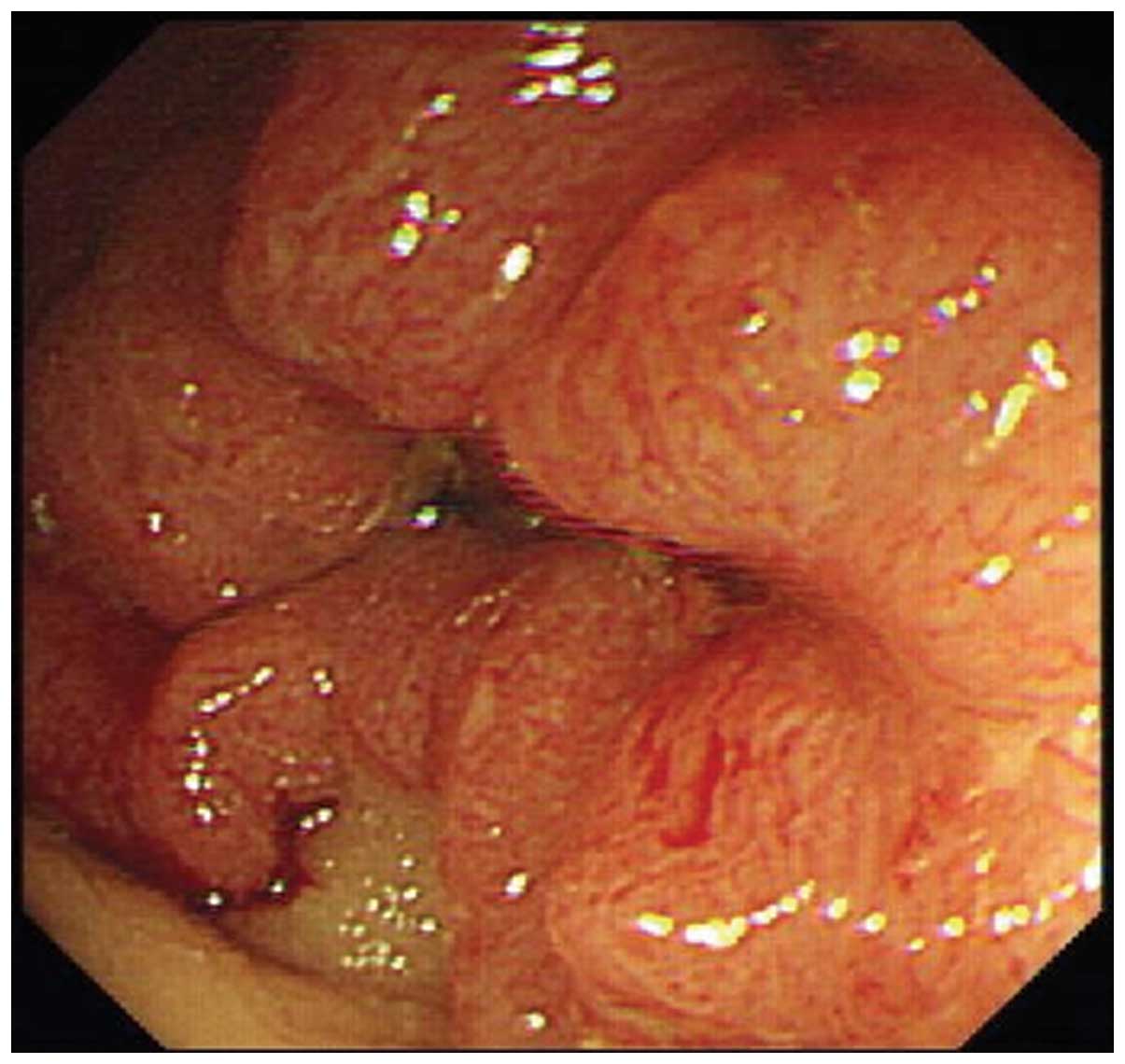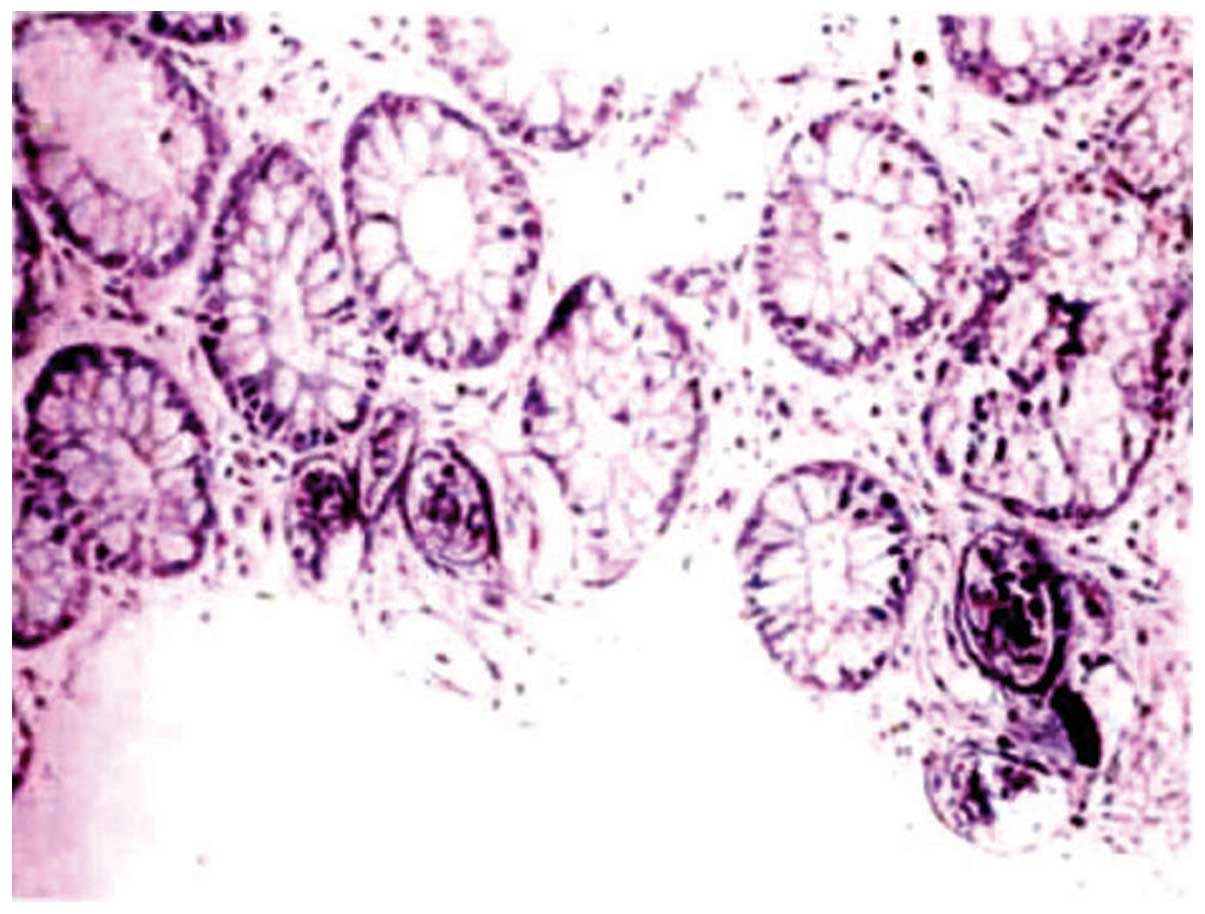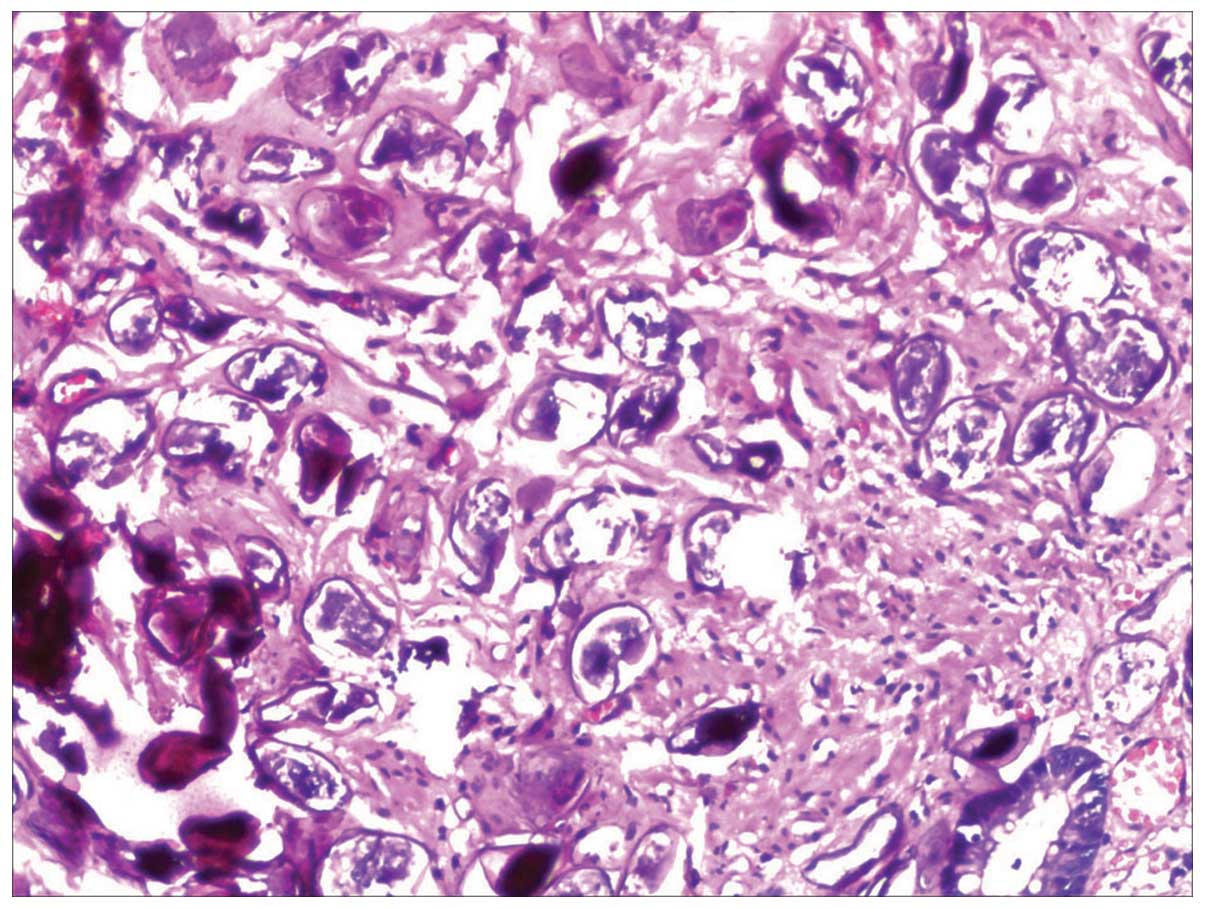Endoscopic characteristics and causes of misdiagnosis of intestinal schistosomiasis
- Authors:
- Published online on: August 21, 2013 https://doi.org/10.3892/mmr.2013.1648
- Pages: 1089-1093
Metrics:
Total
Views: 0 (Spandidos Publications: | PMC Statistics:
)
Total PDF Downloads: 0 (Spandidos Publications: | PMC Statistics:
)
Abstract
The aim of this study was to determine the clinical and endoscopic manifestations, and pathological characteristics of intestinal schistosomiasis in China, in order to raise awareness of intestinal schistosomiasis and prevent misdiagnosis and missed diagnosis. The retrospective analysis of clinical and endoscopic manifestations, and histopathological characteristics, were conducted for 96 patients with intestinal schistosomiasis. Among these patients, 21 lived in areas that were not infected with Schistosoma and 25 (26%) had no history of schistosome infection or contact with infected water. These patients were mainly hospitalized due to symptoms of diarrhea, mucus and bloody purulent stool. Sixteen cases were of the acute enteritis type, and colonoscopy results determined hyperaemic edema and dispersed small mucosal ulcers. The acute infection in patients was pathologically characterized by the deposition of intact ova with a large quantity of eosinocyte infiltration. Forty‑one cases were of the chronic enteritis type which predominantly manifested with yellow nodules and disorder of the vascular surfaces in the intestines. Thirty‑nine cases were diagnosed with mixed type enteritis, which demonstrated acute and chronic histopathological appearances. In addition, six cases of complicated colorectal cancer were observed. Of the 24 misdiagnosed patients, eight were misdiagnosed with ulcerative colitis, five with colorectal cancer, five with colorectal tuberculosis, four with chronic bacillary dysentery and two with irritable bowel syndrome. Intestinal schistosomiasis demonstrated no specific clinical or endoscopic manifestations and it was determined that patients with abdominal pain, diarrhea and mucous stool may be infected with intestinal schistosomiasis. Epidemiological investigations and colonoscopy combined with multi‑block and multi‑site biopsies may improve the diagnosis of intestinal schistosomiasis. In addition, it is necessary for intestinal schistosomiasis to be followed up by colonoscopy, due to its possible correlation with colorectal tumors.















